Central Auckland > Public Hospital Services > Te Whatu Ora – Health New Zealand Te Toka Tumai Auckland >
Orthopaedics | Auckland | Te Toka Tumai | Te Whatu Ora
Public Service, Orthopaedics
Description
- severe osteoarthritis of the hip or knee
- fractured bones
- torn or inflamed muscles, tendons and cartilage
- dislocations of joints
- infections in bones and joints
- trapped nerves
- disorders of the spine.
Where joints have become destroyed by disease, or worn out, orthopaedic surgeons can often replace these joints with artificial ones. This results in marked relief from pain and an increase in mobility and enjoyment of life for patients.
Fractures, except for the most minor ones, are treated by orthopaedic surgeons as they have the expertise to assess the damage around the fracture and ensure the best function is obtained after the fracture is mended.
Most spinal conditions do not need a surgical operation, but a small number do. Your GP will tell you if your condition is one that could benefit from an orthopaedic opinion.
The orthopaedics department at ADHB provides specialist secondary care for the wider Auckland region and tertiary care in a few complex conditions for the whole of New Zealand.
The four nurse specialists working in the orthopaedics department are, Julie Hislop, Katie Moloney Joanne Kalin, and Sowmia Thomas.
Outpatient Clinics
These are held at the Greenlane Clinical Centre. For information about this location please click here.
Consultants
-
Mr Hugh Blackley
Orthopaedic Surgeon
-
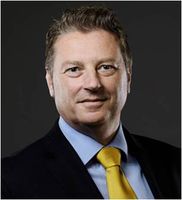
Mr Clayton Brown
Orthopaedic Surgeon
-
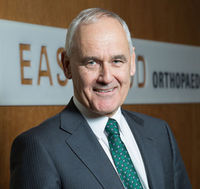
Mr Andrew Campbell
Orthopaedic Surgeon
-
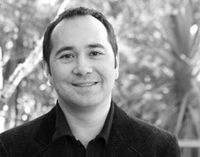
Mr Adam Dalgleish
Orthopaedic Surgeon
-
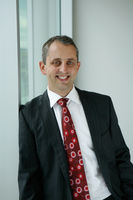
Mr Angus Don
Orthopaedic Surgeon
-
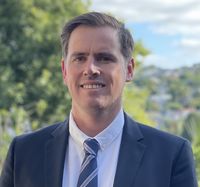
Mr John English
Orthopaedic Surgeon
-
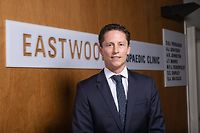
Mr Duncan Ferguson
Orthopaedic Surgeon
-
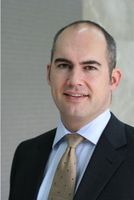
Mr Antony Field
Orthopaedic Surgeon
-
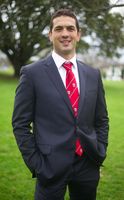
Mr Chris Fougere
Orthopaedic Surgeon
-
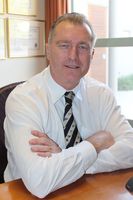
Mr Alastair Hadlow
Orthopaedic Surgeon
-
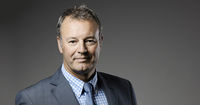
Mr Michael Hanlon
Orthopaedic Surgeon
-
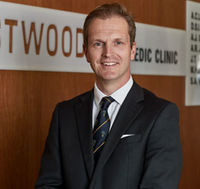
Mr Andrew Johnston
Orthopaedic Surgeon
-
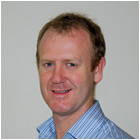
Mr S Mills
Orthopaedic Surgeon
-
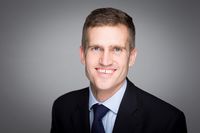
Mr Paul Monk
Orthopaedic Surgeon
-
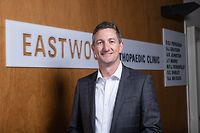
Mr Jacob Munro
Orthopaedic Surgeon
-
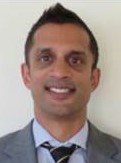
Mr Rupesh Puna
Orthopaedic Surgeon
-
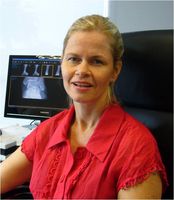
Dr Helen Rawlinson
Orthopaedic Surgeon
-
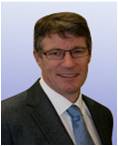
Mr Peter Robertson
Orthopaedic Surgeon
-

Mr Anand Segar
Orthopaedic Surgeon
-
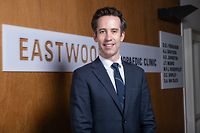
Mr Otis Shirley
Orthopaedic Surgeon
-
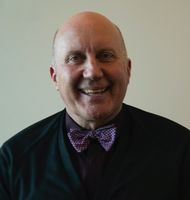
Mr Bruce Twaddle
Orthopaedic Surgeon
-
Mr Mark Wright
Orthopaedic Surgeon
Referral Expectations
For Clinicians:
1. The orthopaedics department is now receiving the majority of their referrals through e-referrals. Please communicate through this medium as much as possible in order to streamline the triage and booking process.
2. Keep in mind that most rejected referrals are due to a lack of information
3. Please include current medications, tests, labs, x-rays (within the last 2 months) and ultrasound reports, all relevant private specialist’s reports and ACC number with your referral. This will expedite the process to have a patient seen and a decision made quickly about the best course of treatment.
4. The GP/ referrer can choose 1 of 4 options when referring to Orthopaedics namely:
-Fracture Clinic
-Spine
-Soft tissue lump/Bony tumor and
-Limb
5. Please refer to the updated Health Pathway for soft tissue lumps in adults Soft Tissue Lumps in Adults (also under document downloads).
All referrals need results of ultrasound and XR to enable prompt triage of the referral.
6. If the patient has a High suspicion of cancer/confirmed cancer please mark the referral urgent to prioritize triage.
7. Spinal referrals: Kindly note the completed spine questionnaire needs to be attached to the e-referral, is an essential triage tool to all spinal referrals enabling prompt triage of the referral resulting in timely review of the patient. Hence significantly decreasing delays in the triage process and clinic review.
Unfortunately, if this is not completed and returned then their referral will be suspended.
• The questionnaire for NECK pain is found here.
• The questionnaire for LOW BACK pain is foiund here.
8. If your patient has an ACUTE orthopaedic condition eg septic joint/ osteomyelitis/fracture please discuss with the On call Orthopaedic registrar as there is no ability see patients acutely when referred to Orthopaedic outpatients
9. If you are referring a patient for an acute admission/review use the Acute Admission template only, NOT use the ‘urgent’ option on the eReferral template to send in an Acute Admission
10. Thank you for your ongoing care in optimizing your patients medically to ensure” fitness for surgery” resulting in timeous Orthopaedic surgery to meet patient’s expectations and decrease post-operative morbidity from elective surgery.
• For patients with hypertension and/or diabetes, aim for BP<140/90 and HbA1C is ideally between 50-55.
11. If ACC, consider referral to private sector for TIMELY treatment (if clinically appropriate).
For Patients:
1. Referral by General Practitioner
You will need to be assessed by your GP who can then refer you to the Orthopaedic Department at the Auckland Hospital (Greenlane site). During your GP visit, ensure that adequate information is provided to the GP so that they can make an appropriate referral. Kindly, remind your GP to order the necessary investigations and attach them to your referral in order to avoid delays.
2. Contact Details
Please ensure you give your GP your CURRENT CORRECT CONTACT details so that you may be contacted for your appointment. If you have moved house, remember to change your contact details. You will be contacted on your cellphone so please respond to messages on your phone. If we cannot contact you, we are not able to give you an appointment to see the orthopaedic surgeon.
3. Triaging of referrals
There are currently more requests for appointments than we have the capacity to see, therefore, referrals are prioritised according to greatest need. We see the most urgent and the most disabled patients. Patients with lesser levels of disability, whose referral is declined, will need to pay privately see a doctor outside the public hospital system. If you have health insurance, you may be able to consult an orthopaedic surgeon in the private sector in a timely manner.
Many minor orthopaedic conditions are treated well by GPs. Alternatively, your doctor may recommend that you will receive swifter and more effective treatment by referring you to a sports medicine doctor, a rheumatologist, or a physiotherapist. For many minor orthopaedic conditions these are exactly the same health professionals that the orthopaedic surgeon uses to assist in your recovery.
4. Appointment to see an orthopaedic surgeon
There are some conditions that only an orthopaedic surgeon can treat and if your GP refers you to the Orthopaedic Department, you may be given an appointment to see a specialist surgeon. In this case the hospital will write to you giving you an appointment time and date. There may be some delay before you receive one. The current wait time is a maximum of four months.
5. Attend your outpatient appointment in Greenlane Clinical Centre
Sometimes you may be requested to have imaging e.g. CT and MRI prior to seeing the orthopaedic surgeon. The imaging is necessary to help the specialist manage your condition. If you require an MRI and are claustrophobic, please inform your GP so the GP can prescribe medication to help with that for your procedure. MRI and CT are high cost procedures. Please attend your appointments. If you cannot go, make contact with Greenlane Clinical Centre to cancel or change your booking. This way, we can ensure another patient can make use of your appointment time.
If you wish to read more about the process of elective service provision as outlined by the Ministry of Health, please click here
6. What you can do to “GET FIT” for your Orthopaedic surgery:
- If you have hypertension and/or diabetes, see your GP to assess and ensure your BP and diabetes is well controlled. Aim for a BP<140/90 and HbA1C is ideally between 50-55.
- Participate in rehabilitation as advised by your orthopaedic surgeon and physiotherapist.
Urgent referrals
If you have an urgent orthopaedic condition such as a bone infection, present at the Auckland Hospital emergency department for treatment. If you have a malignant bone tumour, your doctor will mark the referral Urgent.
Injuries covered by Accident Compensation Corporation (ACC)
If you have a condition that was caused by an accident, we are able to treat you at ADHB. Please bring your ACC number with you to appointments if you have been given one. You may also decide to receive assessment and treatment from an orthopaedic surgeon outside the hospital.
Fees and Charges Description
There are no charges for New Zealand citizens or those with permanent New Zealand residency when they are treated in the public hospital. All non-residents and visitors to New Zealand will be billed for the full cost of the consultations and treatment.
The only exception to this is for the treatment of accidents where the cost of treatment can be paid for by the Accident Compensation Corporation (ACC).
Procedures / Treatments
Orthopaedic surgeons can do operations on tendons to repair them or to improve the muscle balance around a joint. Ligaments can be repaired or reconstructed. Bones, muscles, and other connective tissues occasionally develop tumours, some of which can be cancerous. These are treated by orthopaedic surgeons. After surgery there is always a period of recovery and there is often splintage for a time. Physiotherapists are used to assist you recover function after an operation.
Orthopaedic surgeons can do operations on tendons to repair them or to improve the muscle balance around a joint. Ligaments can be repaired or reconstructed. Bones, muscles, and other connective tissues occasionally develop tumours, some of which can be cancerous. These are treated by orthopaedic surgeons. After surgery there is always a period of recovery and there is often splintage for a time. Physiotherapists are used to assist you recover function after an operation.
Orthopaedic surgeons can do operations on tendons to repair them or to improve the muscle balance around a joint. Ligaments can be repaired or reconstructed. Bones, muscles, and other connective tissues occasionally develop tumours, some of which can be cancerous. These are treated by orthopaedic surgeons. After surgery there is always a period of recovery and there is often splintage for a time. Physiotherapists are used to assist you recover function after an operation.
This clinic is for patients who have sustained an injury that has already been treated. These are injuries where further follow-up of that injury is required; to monitor progress of a healing bone, check the position of the bone in a cast and to decide when other steps in management such as re-manipulation of the fracture or removal of a cast is required. Often at these fracture clinics x-rays are taken on arrival. Although an appointment time is given, the time to have x-rays, casts removed and other treatments instigated may take several hours.
This clinic is for patients who have sustained an injury that has already been treated. These are injuries where further follow-up of that injury is required; to monitor progress of a healing bone, check the position of the bone in a cast and to decide when other steps in management such as re-manipulation of the fracture or removal of a cast is required. Often at these fracture clinics x-rays are taken on arrival. Although an appointment time is given, the time to have x-rays, casts removed and other treatments instigated may take several hours.
These are clinics for patients who have been referred by their doctor for an orthopaedic opinion on a specific concern. These clinics are usually attended by a specialist orthopaedic surgeon who will be available to advise on diagnosis and management. It is best if you arrange for your General Practitioner to have any appropriate x-rays or ultrasound scans taken at an earlier date and you should bring these with you to the clinic. If you do not have x-rays, then there will be considerable delays at the clinic if we have to arrange these for you. Sometimes more sophisticated imaging is required and it is not reasonable for your GP to anticipate all the investigations we will require. None the less you should ask him/her if there are x-rays you might need and arrange to have these done first. GPs can ask for x-rays and ultrasounds to be done at the Greenlane Clinical Centre and there is no cost to you for this. Alternatively, you can have these tests done more promptly in the private x-ray clinics.
These are clinics for patients who have been referred by their doctor for an orthopaedic opinion on a specific concern. These clinics are usually attended by a specialist orthopaedic surgeon who will be available to advise on diagnosis and management. It is best if you arrange for your General Practitioner to have any appropriate x-rays or ultrasound scans taken at an earlier date and you should bring these with you to the clinic. If you do not have x-rays, then there will be considerable delays at the clinic if we have to arrange these for you. Sometimes more sophisticated imaging is required and it is not reasonable for your GP to anticipate all the investigations we will require. None the less you should ask him/her if there are x-rays you might need and arrange to have these done first. GPs can ask for x-rays and ultrasounds to be done at the Greenlane Clinical Centre and there is no cost to you for this. Alternatively, you can have these tests done more promptly in the private x-ray clinics.
Some surgeons have special expertise in one area of orthopaedics. If your problem is with your spine you will be seen by one of our specialised spine surgeons. Only about 4% of the patients seen by the spine surgeons need to have a spinal operation. A specialised hand surgeon and a tumour (sarcoma) surgeon attend the Greenlane Outpatient Clinic.
Some surgeons have special expertise in one area of orthopaedics. If your problem is with your spine you will be seen by one of our specialised spine surgeons. Only about 4% of the patients seen by the spine surgeons need to have a spinal operation. A specialised hand surgeon and a tumour (sarcoma) surgeon attend the Greenlane Outpatient Clinic.
Joint replacement surgery is sometimes required to treat joints that have been damaged from "wearing out" types of arthritis or from other forms of joint disease including rheumatoid arthritis. In these operations the damaged joint surface is removed and replaced with artificial surfaces normally made from metal (chromium cobalt alloy, titanium), plastic (high density polyethylene) and ceramic surfaces which act as alternate bearing surfaces for the damaged joint. These operations are major procedures which will require you to be in fairly good health otherwise and a stay of several days in hospital. These operations are followed by a significant period of rehabilitation. The hospital has a number of options for the particular operation and the type of artificial joint and these will be discussed with you when you see the surgeon and when you are booked for surgery. Occasionally blood transfusions are required; if you have concerns, please raise them with your surgeon during your consultation.
Joint replacement surgery is sometimes required to treat joints that have been damaged from "wearing out" types of arthritis or from other forms of joint disease including rheumatoid arthritis. In these operations the damaged joint surface is removed and replaced with artificial surfaces normally made from metal (chromium cobalt alloy, titanium), plastic (high density polyethylene) and ceramic surfaces which act as alternate bearing surfaces for the damaged joint. These operations are major procedures which will require you to be in fairly good health otherwise and a stay of several days in hospital. These operations are followed by a significant period of rehabilitation. The hospital has a number of options for the particular operation and the type of artificial joint and these will be discussed with you when you see the surgeon and when you are booked for surgery. Occasionally blood transfusions are required; if you have concerns, please raise them with your surgeon during your consultation.
The division of a crooked or bent bone to improve alignment of the limb. These procedures normally involve some form of internal fixation, such as rods or plates, or external fixation which involves external wires and pins to hold the bone. The type of procedure for fixation will be explained when the surgery is planned.
The division of a crooked or bent bone to improve alignment of the limb. These procedures normally involve some form of internal fixation, such as rods or plates, or external fixation which involves external wires and pins to hold the bone. The type of procedure for fixation will be explained when the surgery is planned.
A large number of orthopaedic procedures on joints can be performed using an arthroscope, where a fiber optic telescope is used to look inside the joint. Through this type of keyhole surgery, fine instruments can be introduced through small incisions (portals) to allow surgery to be performed without the need for large cuts. This allows many procedures to be performed as a day stay and allows quicker return to normal function of the joint. Arthroscopic surgery is less painful than open surgery and decreases the risk of healing problems. Arthroscopy allows access to parts of the joints which cannot be accessed by other types of surgery.
A large number of orthopaedic procedures on joints can be performed using an arthroscope, where a fiber optic telescope is used to look inside the joint. Through this type of keyhole surgery, fine instruments can be introduced through small incisions (portals) to allow surgery to be performed without the need for large cuts. This allows many procedures to be performed as a day stay and allows quicker return to normal function of the joint. Arthroscopic surgery is less painful than open surgery and decreases the risk of healing problems. Arthroscopy allows access to parts of the joints which cannot be accessed by other types of surgery.
Relief from bunions Most bunions are treatable without surgery. Prevention is always best. To minimise your chances of developing a bunion, never force your foot into a shoe that doesn't fit. Choose shoes that conform to the shape of your feet. Go for shoes with wide insteps, broad toes and soft soles. Avoid shoes that are short, tight or sharply pointed, and those with heels higher than 6cm. If you already have a bunion, wear shoes that are roomy enough to not put pressure on it. This should relieve most of your pain. You may want to have your shoes stretched out professionally. You may also try protective pads to cushion the painful area.
Relief from bunions Most bunions are treatable without surgery. Prevention is always best. To minimise your chances of developing a bunion, never force your foot into a shoe that doesn't fit. Choose shoes that conform to the shape of your feet. Go for shoes with wide insteps, broad toes and soft soles. Avoid shoes that are short, tight or sharply pointed, and those with heels higher than 6cm. If you already have a bunion, wear shoes that are roomy enough to not put pressure on it. This should relieve most of your pain. You may want to have your shoes stretched out professionally. You may also try protective pads to cushion the painful area.
Most bunions are treatable without surgery. Prevention is always best. To minimise your chances of developing a bunion, never force your foot into a shoe that doesn't fit. Choose shoes that conform to the shape of your feet. Go for shoes with wide insteps, broad toes and soft soles. Avoid shoes that are short, tight or sharply pointed, and those with heels higher than 6cm. If you already have a bunion, wear shoes that are roomy enough to not put pressure on it. This should relieve most of your pain. You may want to have your shoes stretched out professionally. You may also try protective pads to cushion the painful area.
Document Downloads
-
OS-Orthotic-Referral-Form-2021-Interactive
(PDF, 174.2 KB)
Peke Waihanga Orthotic Referral Form
-
Orthotics Referral Guideline
(PDF, 181 KB)
Orthotic Referral Guidelines
-
Personal Health Orthotic Service and Product Frequently Asked Questions (FAQ) - 15 September 2021 (002)
(PDF, 150.5 KB)
Personal Health Orthotic Service and Product Frequently Asked Questions (FAQ)
- Spine, Mid Lower Back Pain Questionnaire (PDF, 727.5 KB)
- Spine, Neck and Arm Pain Questionnaire (PDF, 754.2 KB)
-
New Updated Health Pathway for soft tissue lumps in adults
(DOCX, 12.5 KB)
Ultrasound and XR results are essential to triage the referral
Parking
Find out more about parking options on the Auckland District Health Board website.
Website
Contact Details
Auckland City Hospital
Central Auckland
2 Park Road
Grafton
Auckland 1023
Street Address
2 Park Road
Grafton
Auckland 1023
Postal Address
Private Bag 92 024
Auckland Mail Centre
Auckland 1142
Was this page helpful?
This page was last updated at 1:41PM on November 23, 2023. This information is reviewed and edited by Orthopaedics | Auckland | Te Toka Tumai | Te Whatu Ora.

